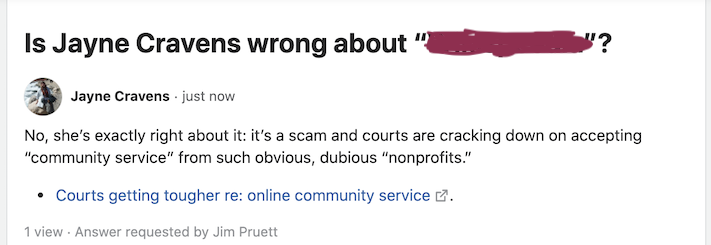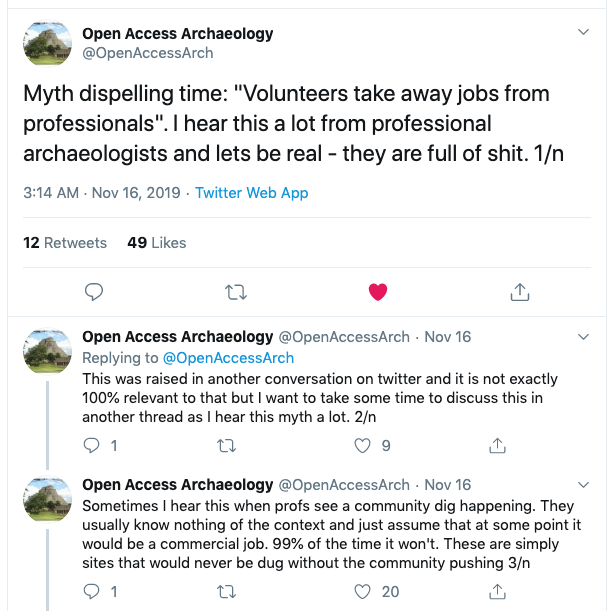
I have to start this blog with three disclaimers, because if I don’t, I will get accused of hating volunteerism, hating charity and not liking days of service:
- First: yes, I support volunteering. I am, in fact, a passionate supporter of volunteer engagement. I believe nonprofits, NGOs, charities and any community-focused initiative should create roles and task for volunteers, specifically, and should have an ongoing commitment to volunteer engagement. If I didn’t believe that, I would not have devoted a significant portion of my career, my web site and my blog to the factors for success in volunteer engagement.
- Second: No, I am not opposed to all charity. Sometimes, absolutely, the best thing to do in a situation is to provide temporary relief, like food or a tent. But I do have some reservations about people’s emphasis on charity rather than transformation.
- Third: I am not opposed, outright, to days-of-service, like Make a Difference Day, Join Hands Day, Good Deeds Day, MLK Day of Service, and all the many, many other ones, nor to volunteering over the holidays. I just have some reservations about the intense focus on such.
Jerome Tennille has recently tweeted:
The road to hell is lined with good intentions. The statement is even true when about the act of volunteering. Volunteerism is a social construct that’s taught, when done thoughtlessly (with good intentions) can result of negative outcomes. January 13, 2020.
and
The act of volunteering is a social construct. This is taught to us. But, maybe we need to unlearn some of what we understand about it. Why? Because it’s not universally valued globally. Maybe we need to reimagine it philosophically. January 12, 2020.
Both were tweeted in association with his recent blog: The Misunderstood Social Construct That “Does Good”. And for many, this is NOT going to be an easy blog to read. But anyone who wants to promote volunteerism, and in particular, any corporate program that wants to mobilize its employees to volunteer for a cause or any individual that wants to mobilize friends or fellow students to volunteer, really needs to read Jerome’s blog, which says, in part:
We must decouple community service from holidays and societally prescribed dates in history, then position volunteering as something to do based on need year-round and think about our place in solving an issue and whether that conflicts with our (or others) expectations.
It is something I’ve been blogging about for a while myself, and NOT to much fanfare – in fact, I’ve made some people mad for daring to question some volunteerism initiatives and activities by volunteers themselves, especially DIY volunteers. Here are the blogs I’ve written over the years on a related note:
- Virtual volunteering is more than “making cards for the sick/elderly”
- Vanity Volunteering: all about the volunteer
- Isn’t my good heart & desire enough to help abroad?
- Volunteering to help your own mental health
- More Than Me scandal in Liberia: a lesson to all who “just want to help”
- “But I wanted to help POOR people…”
- I’m a volunteer & you should just be GRATEFUL I’m here!
- Why Should the Poor Volunteer? It’s Time To Re-Think the Answer
And that list excludes most of what I’ve written about the ethics of voluntourism – of people paying to “volunteer” abroad – or of the growing number of anti-volunteerism initiatives (yes, there are initiatives opposed to some or all volunteering (unpaid work).
Absolutely, there is an entitlement regarding volunteerism, even domestic volunteering, that I find really, really distasteful, patriarchal, colonialist, classist and, at times, racist. And I’m so, so happy to not be alone in this feeling.
Keep asking the hard questions, Jerome.
January 20, 2021 update: After tweeting about this blog, someone suggested I read the 2006 piece “What We Don’t Talk About When We Don’t Talk About Service” by Adam Davis, which proposes that volunteering / community service is an expression of how we “cherish inequality.” An excerpt: “I want to call into question the assumption or conclusion that Service Is Good (SIG)… Here is an exaggerated pass at the relation between inequality and service: I serve you because I want to; I choose to. You receive my service because you have to; you need it. I live in the realm of freedom; you live in the realm of necessity. Serving you, I confirm my relative superiority. Being served, you confirm your inferiority… Do acts of service move us toward equality? Might some acts of service enshrine and even extend the very gap they mean to bridge?” A good piece, if a bit too lengthy.

If you have benefited from this blog or other parts of my web site or my YouTube videos and would like to support the time that went into researching information, developing material, preparing articles, updating pages, etc. (I receive no funding for this work), here is how you can help.








